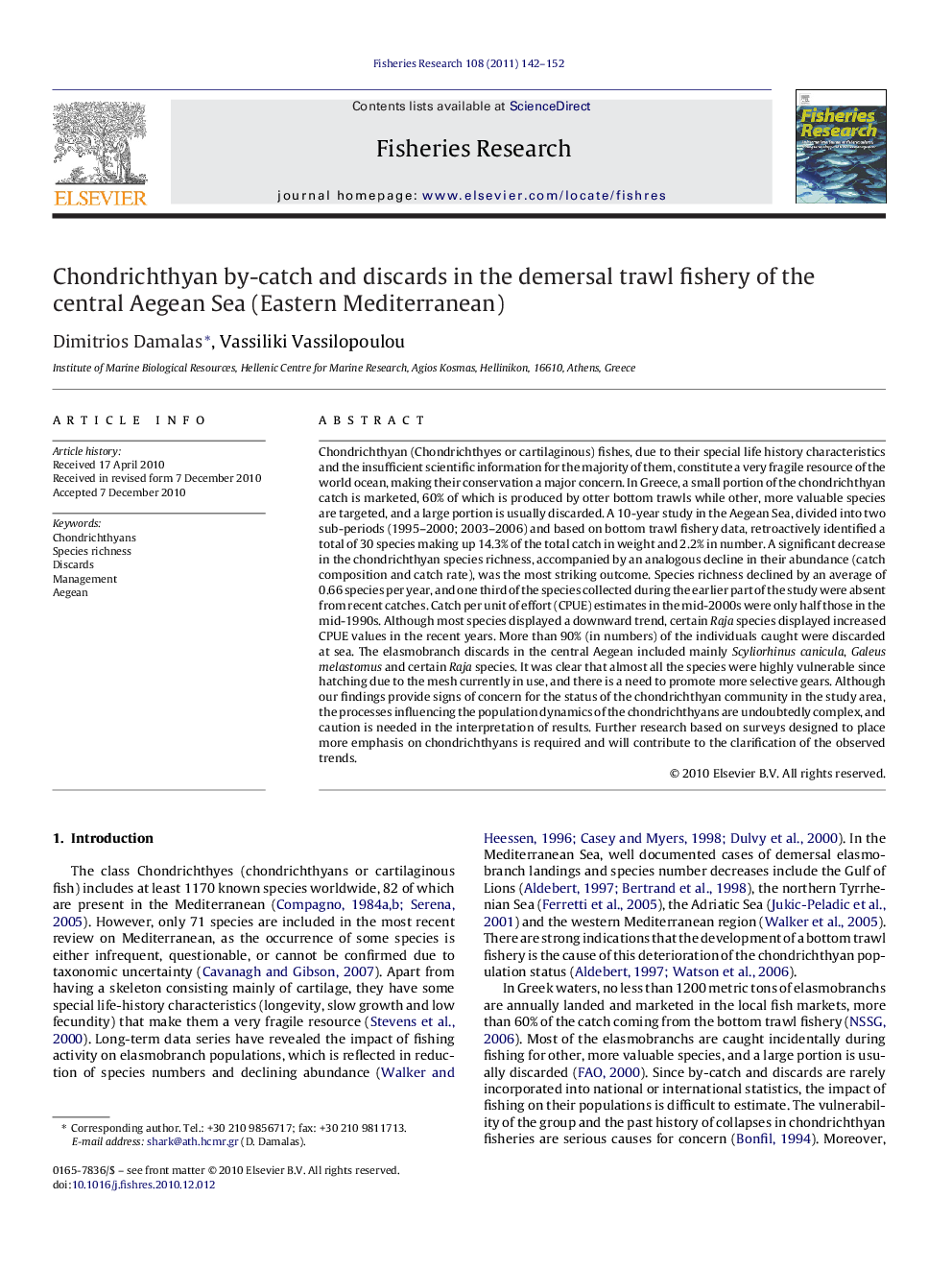| Article ID | Journal | Published Year | Pages | File Type |
|---|---|---|---|---|
| 4543726 | Fisheries Research | 2011 | 11 Pages |
Chondrichthyan (Chondrichthyes or cartilaginous) fishes, due to their special life history characteristics and the insufficient scientific information for the majority of them, constitute a very fragile resource of the world ocean, making their conservation a major concern. In Greece, a small portion of the chondrichthyan catch is marketed, 60% of which is produced by otter bottom trawls while other, more valuable species are targeted, and a large portion is usually discarded. A 10-year study in the Aegean Sea, divided into two sub-periods (1995–2000; 2003–2006) and based on bottom trawl fishery data, retroactively identified a total of 30 species making up 14.3% of the total catch in weight and 2.2% in number. A significant decrease in the chondrichthyan species richness, accompanied by an analogous decline in their abundance (catch composition and catch rate), was the most striking outcome. Species richness declined by an average of 0.66 species per year, and one third of the species collected during the earlier part of the study were absent from recent catches. Catch per unit of effort (CPUE) estimates in the mid-2000s were only half those in the mid-1990s. Although most species displayed a downward trend, certain Raja species displayed increased CPUE values in the recent years. More than 90% (in numbers) of the individuals caught were discarded at sea. The elasmobranch discards in the central Aegean included mainly Scyliorhinus canicula, Galeus melastomus and certain Raja species. It was clear that almost all the species were highly vulnerable since hatching due to the mesh currently in use, and there is a need to promote more selective gears. Although our findings provide signs of concern for the status of the chondrichthyan community in the study area, the processes influencing the population dynamics of the chondrichthyans are undoubtedly complex, and caution is needed in the interpretation of results. Further research based on surveys designed to place more emphasis on chondrichthyans is required and will contribute to the clarification of the observed trends.
